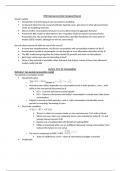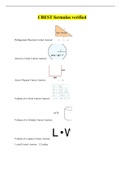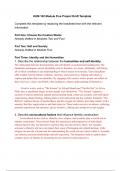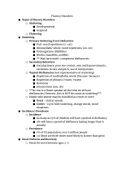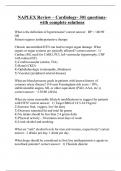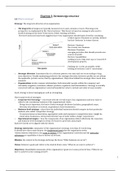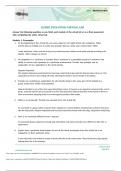Week's outline
Introduction to intertemporal macroeconomics modelling
Go beyond what intro UG courses/textbooks typically cover, get closer to what advanced/state
of the art modelling looks like
Discuss further consumption because it is a key determinant of aggregate demand
Present the RBC model an alternative to the 3-equation model to explain macroeconomics
fluctuations but also and perhaps more importantly a possible foundation for more general
models (DSGE models, although we will not cover these)
How do these lectures fit with the rest of the course?
In some way complementary, we discuss consumption and consumption matters for the IS
Intertemporal model of consumption can be thought of as an alternative derivation of the IS
The RBC model brings together the Solow model (LR growth) and short run fluctuations
Each topic can be seen also as interesting in itself
Some of the material is inevitably rather technical, but it gives a sense of how more advanced
models really look like
Lecture 15 & 16: Consumption
Refresher: two period consumption model
Two period consumption model
Households solve:
o subject to
o Maximise total utility: dependent on consumption levels in both periods c 1 and c2, with
utility in the next period discounted by β
If β = 1 current and future treated equally
If β < 1 future is discounted and today’s consumption is valued more than future
consumption
o Subject to income in both periods y1 and y2, with consumption transferable across
periods by investing/ borrowing at rate r
First order condition:
o
There is a choice to consume today or save and consume (1+r) units in future
When you save, there are 2 opposing forces: your impatience (when β < 1) and
savings interest earned (1+R)
Equate cost of waiting (LHS) with benefit of waiting (RHS)
Utility is maximised when we are indifferent between moving consumption from
today to the future (or vice versa)
o Can also be expressed as MRS = MRT:
Slope of indifference curve = slope of intertemporal budget constraint
Graphically:
, o
o Intertemporal budget constraint
From the initial income (y1, y2) point, move along the line with slope (1 + r) by
borrowing/ saving
X-intercept equals to discounted lifetime resources
Y- intercept as all resources compounded to the next period
o Agents are consumption smoothing: optimise utility by moving along the constraint
Towards a more general model
Much of the intuition from the more general model we will now look at is very much like in the
two-period model setting
There are more than two periods in reality
We might want to be more explicit in the treatment of uncertainty
Standard intertemporal model of consumption
Standard intertemporal model of consumption
Consumption is modelled as the decision of an optimizing rational agent
The key elements are:
o Objectives of the decision maker (the household)
o Constraints faced
Objectives are summarized by a utility function
o
o u(.): instantaneous utility function
o ct: consumption at time t
o βt: discount for period t's utility
Intertemporal budget constraint
o
o Derivation below
Breaking down the objective utility function
To analyze the choice of the household we must describe its willingness to substitute
consumption across periods. This is captured by 2 elements in the expression.
o Element 1: curvature of u(.)
, Measure curvature with the elasticity of intertemporal substitution (EIS)
This is the inverse of the CRRA (in micro course)
Smaller EIS <> larger CRRA <> more risk averse
It measures how the MRS (the indifference curve gradient) varies with the ratio
ct+1/ct (the axes). How MRS change as you substitute consumption from one
period to another.
In other words, EIS measures how convex the indifference curves are
More concave utility function, u''(.) more negative, positive EIS is
smaller, more convex indifference curve
The more convex the indifference curve (smaller EIS), the higher the desire for
consumption smoothing (and the more risk averse)
Recall: more concave utility function, more risk averse, prefer many
small deviations vs less but more extreme deviation, prefer smooth
consumption vs high variance consumption
Risk attitudes are thus intrinsically linked to willingness to substitute
temporally
The EIS measures the elasticity of the ratio of consumption w.r.t. a change in the
ratio of marginal utilities (the indifference curve slope). It is therefore a key
determinant of the sensitivity of consumption decision/ growth w.r.t. the
interest rate.
Convexity of indifference curve captured in EIS determines sensitivity of
consumption decisions (changes in the tangency point) as the interest
rate (intertemporal budget slope) changes
Visualise: higher EIS, less convex indifference curve, the more the
consumption decision (tangency point) would change as interest rate
(intertemporal budget slope) changes
o Element 2: the discount factor 0 < β < 1
Captures the idea that households value future consumption less than present
consumption
Due to psychological factors, such as impatience;
Also due to a chance that future consumption will not be enjoyed,
because of death of the decision maker
Assuming that future utility is discounted by β t (exponential discounting) implies
intertemporally consistent (time consistent) choices.
, A planned course of action remains optimal unless new information
arrives
Alternative assumptions exist in the literature (eg. hyperbolic
discounting), where choices may not be time consistent. More on that
at the end of the lecture.
Σ: why we consider a sum of terms up to infinity
o Nobody argues that real life individuals live literally forever
o Justification 1: infinity is to be taken as a convenient approximation for a finite but very
long horizon
o Justification 2: intergenerational altruism
The individual taking the consumption decision cares for their offspring, and
they intend to leave bequests to them; they also know that their offspring will
care about their own offspring, and so on.
This argument has been made precise by Barro (1974), and we will return to it
when discussing fiscal policy
Σ: why we consider sums
o An important “hidden” assumption is that instantaneous utility is independent of
consumption in other periods
We could instead have assumed more generally: u(..., c t−1, ct, ct+1, ...)
o This is called intertemporal separability or additivity over time
It implies the MRS between any two periods is independent of consumption in
any other period.
o This might be seen as more restrictive than it first appears as it rules out, for example:
Habit formation (satisfaction may be dependent on prior periods' levels of
consumption, like a person who is used to a rich lifestyle)
Goods like treats or holidays where the benefits last after the act of
consumption (benefits of consumption lasts over multiple periods)
o Example:
Gives the standard additive function if γ = 0
But for γ ≠ 0, the MRS between consumption at times 1 and 2 depends on
consumption at times 0 to 3:
δU δU
MRS above is: ÷
δ c1 δ c2
Substitutability of consumption (MRS) between 2 periods (1 and 2) is no
longer independent of consumption in other periods (0 and 3)
This example utility function, if γ ≠ 0, could show the case of habits (less benefit
now from a given consumption level if prior consumption level is very high, as
the agent is used to high consumption level)
E [.]: taking expectations
o The future is uncertain, so agents must forecast the value of relevant future variables

